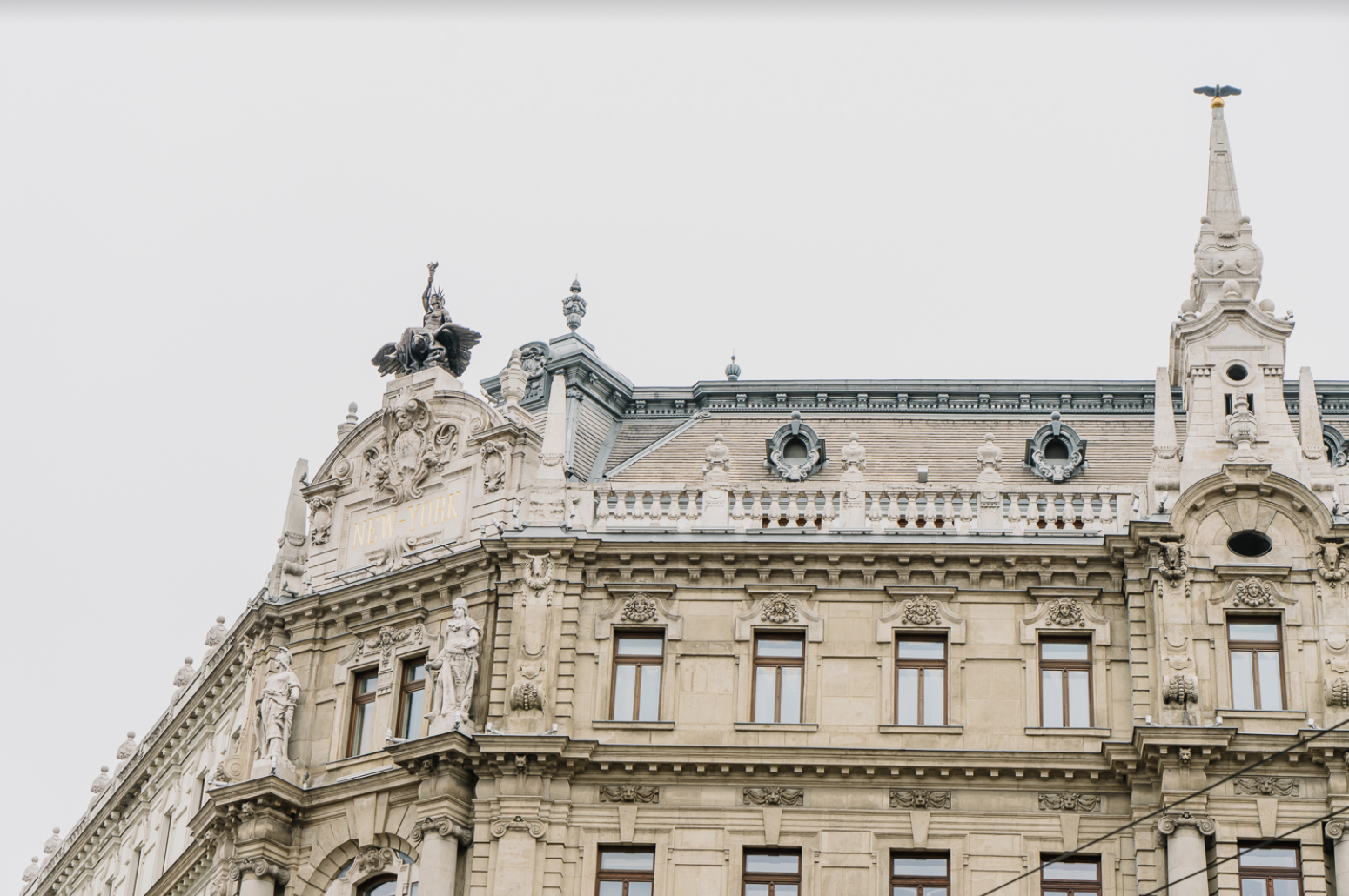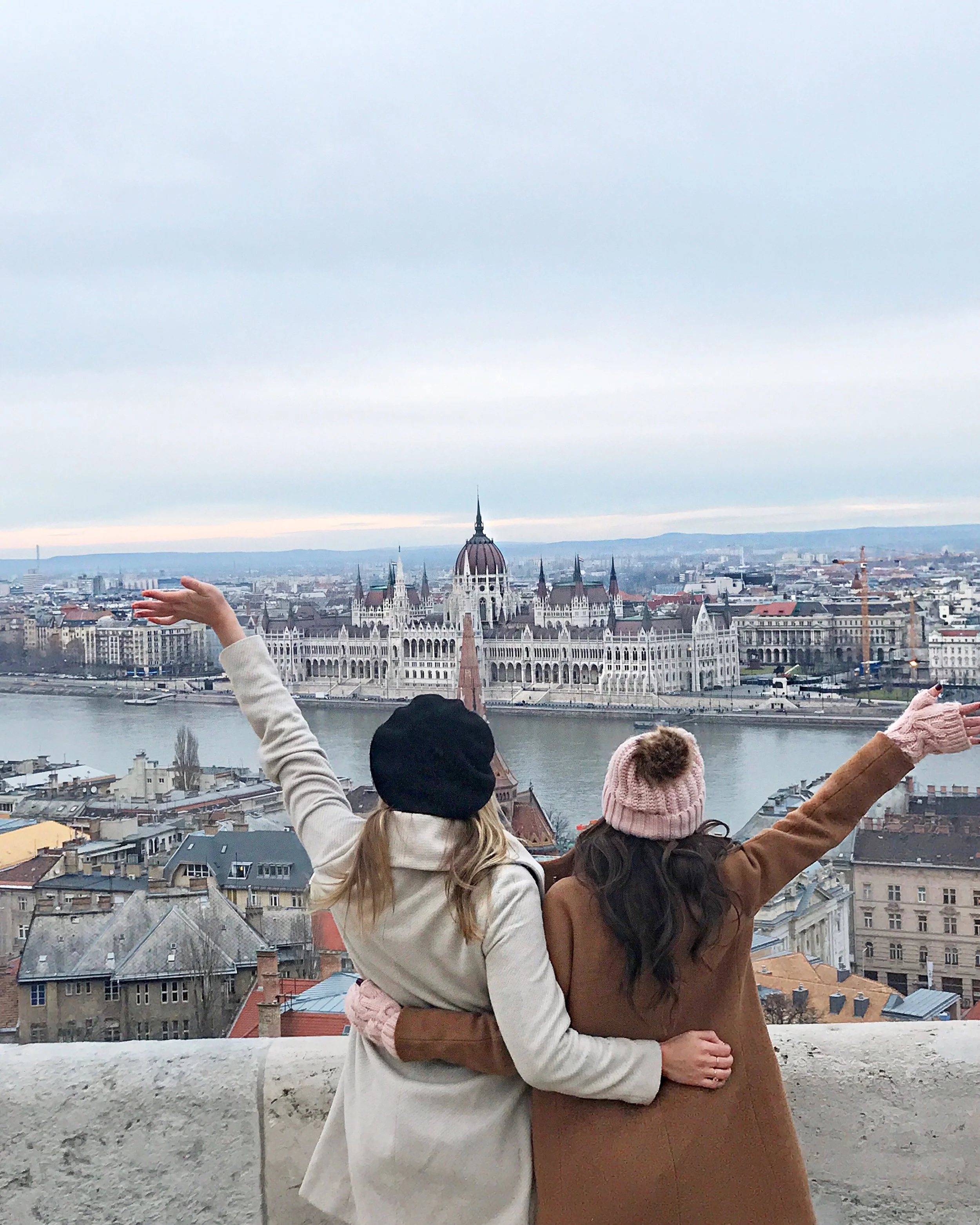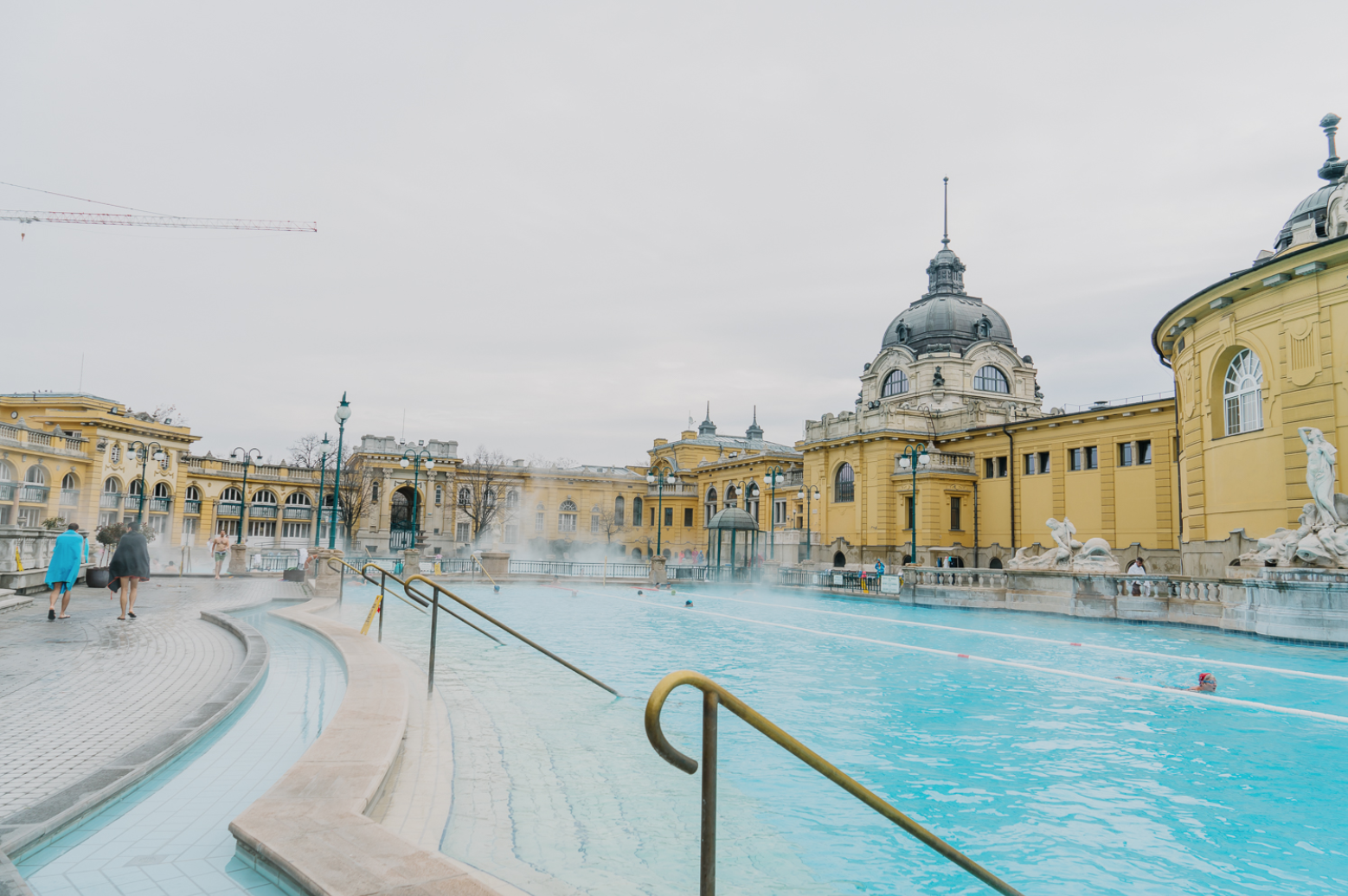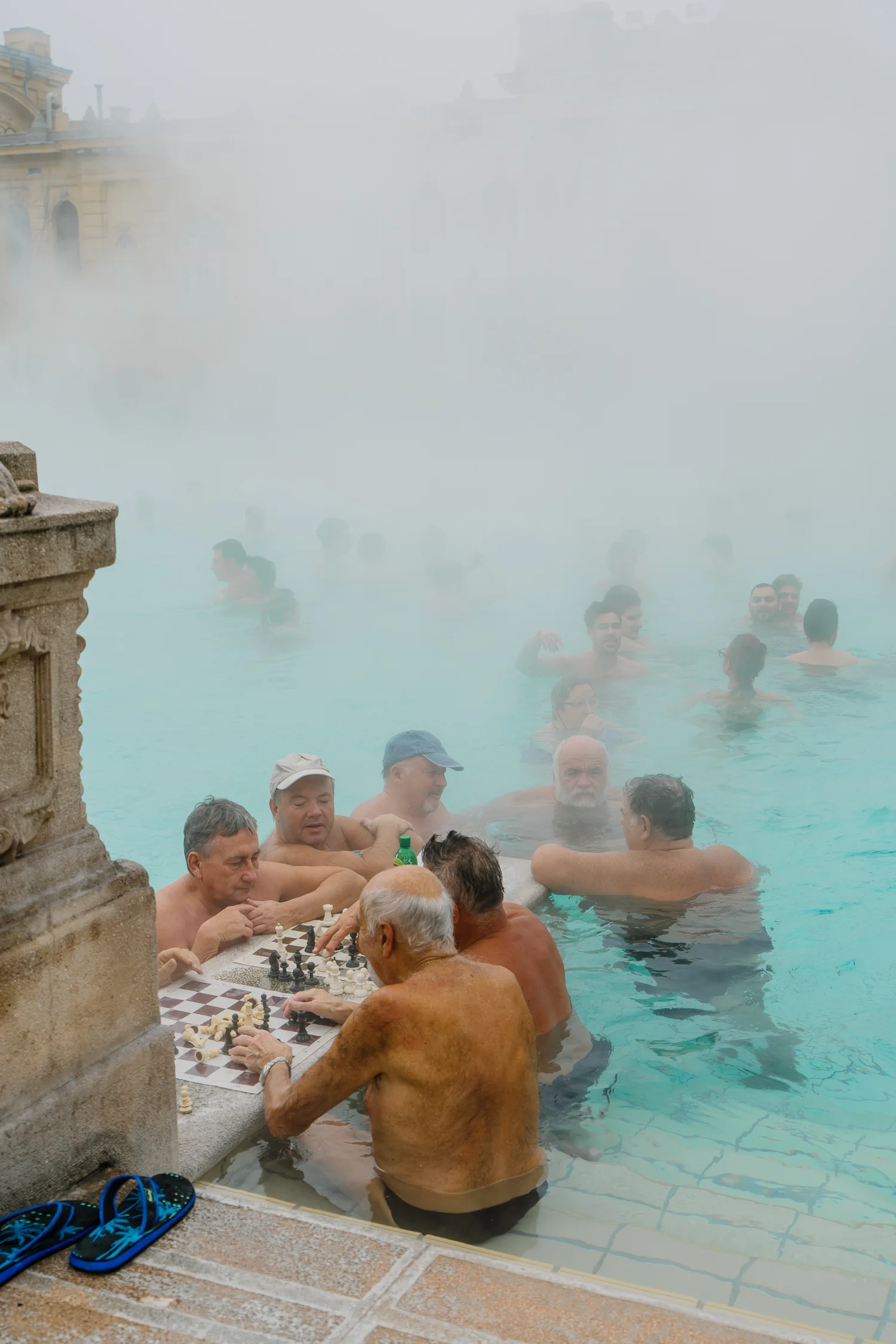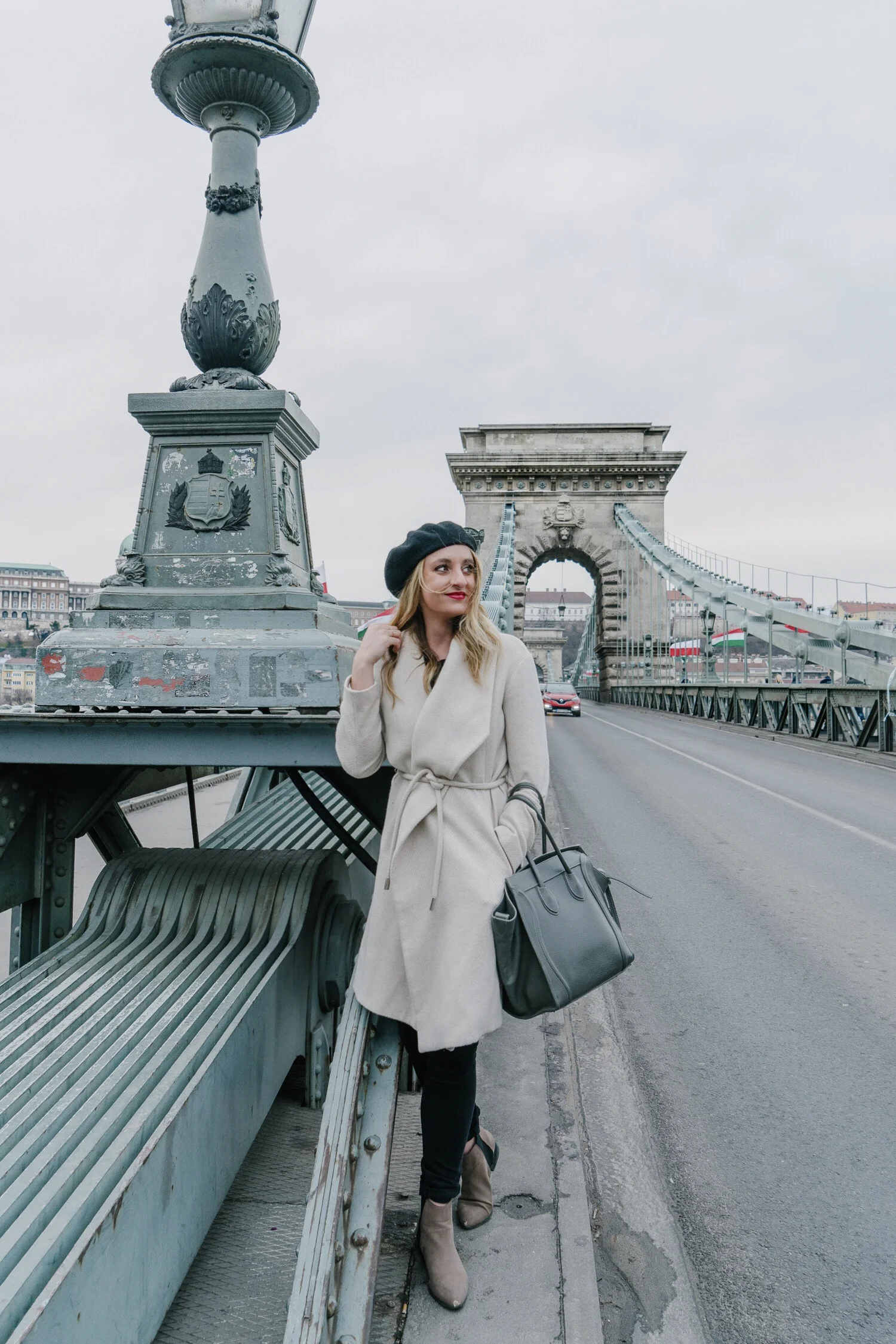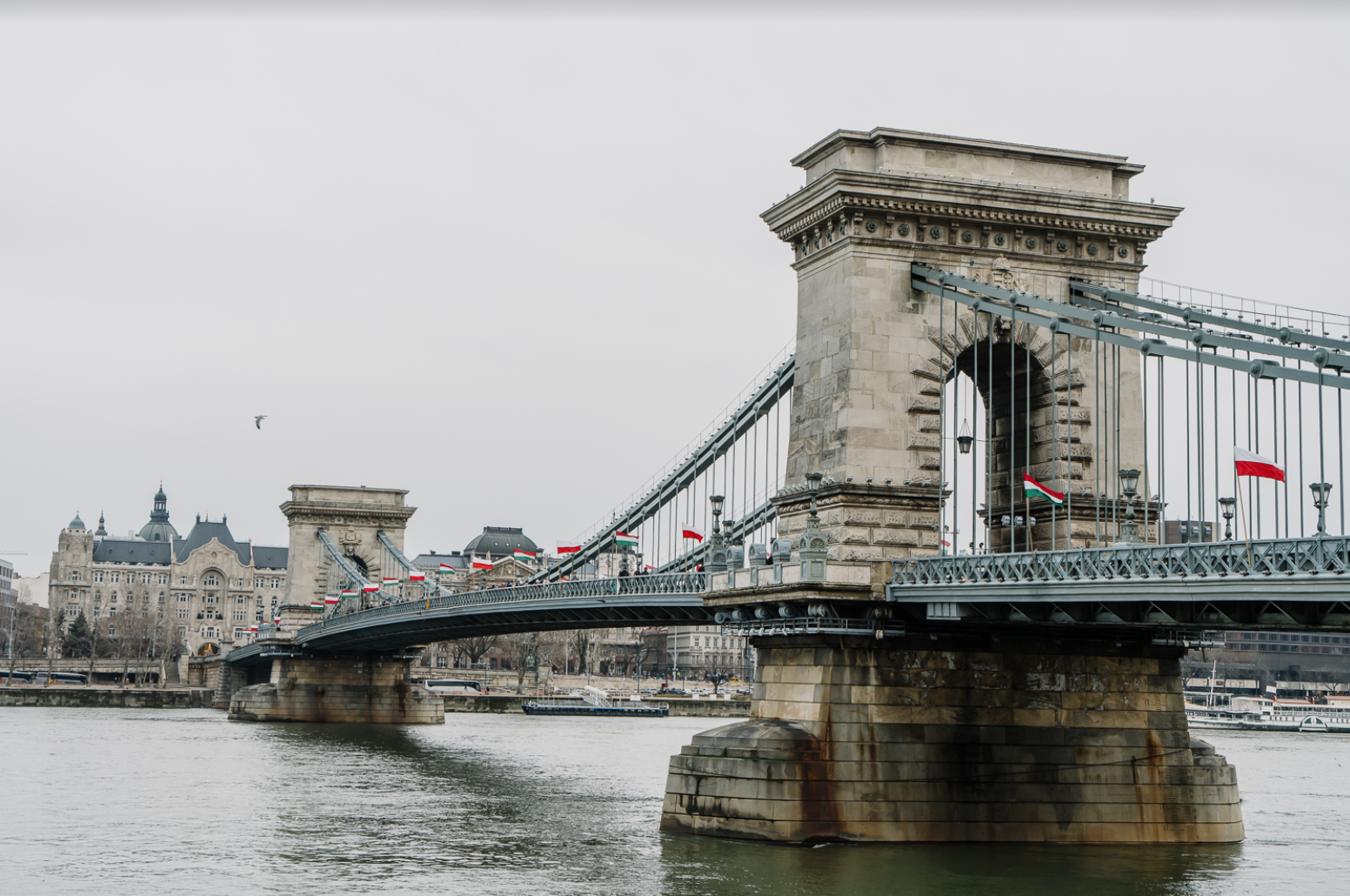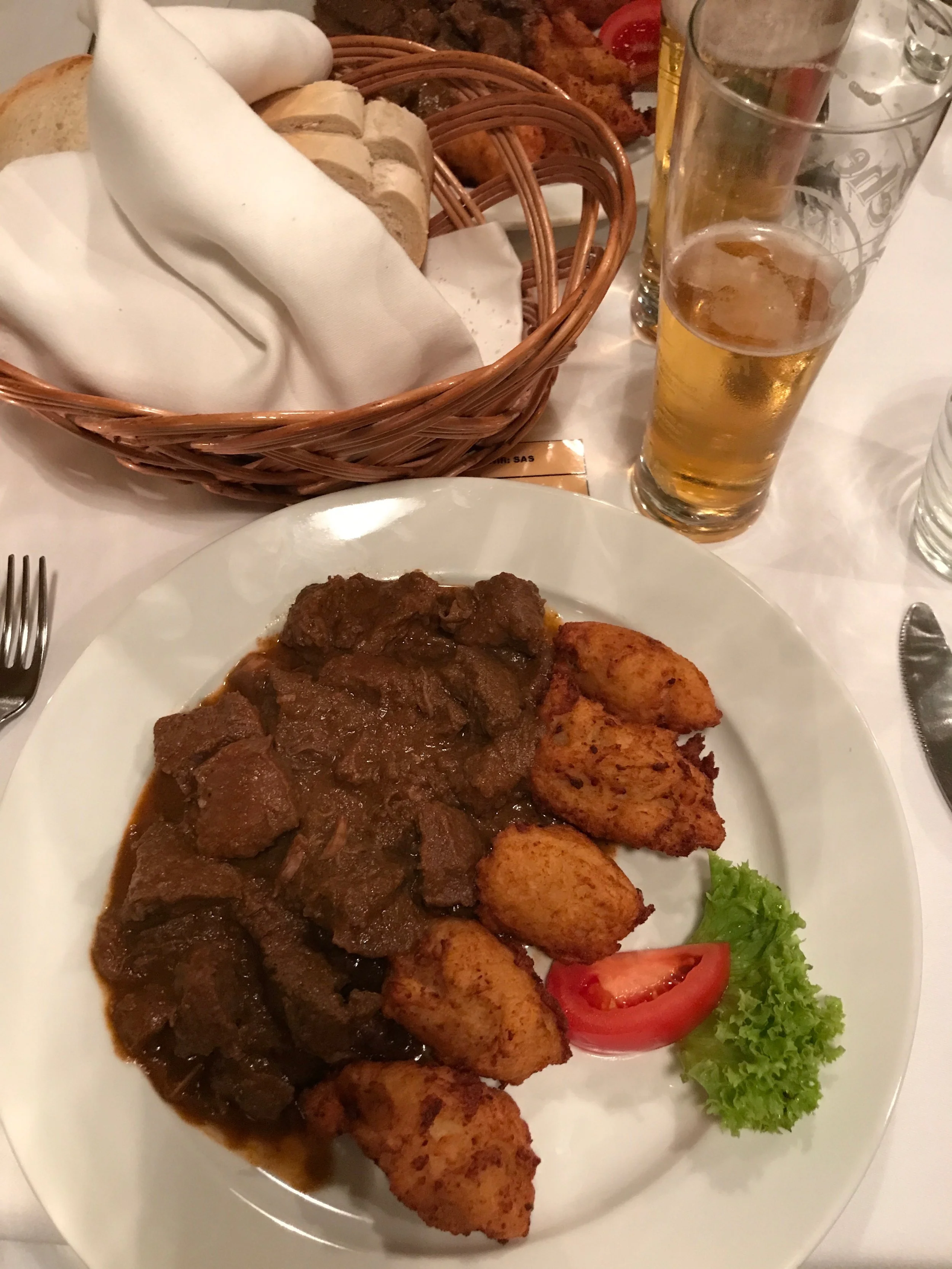A couple months ago my friend Haley and I had the great pleasure of exploring Budapest: the Hungarian capital and arguably, the most fascinating city in eastern Europe. Divided in half by the Danube, Budapest is comprised of a hilly "Buda" district on the west side of the river and a flat "Pest" side on the east.
I'd often heard Budapest is one of the most beautiful cities in Europe, and I would have to agree there are few places that compare architecturally (the city is exploding with gorgeous baroque, neoclassical, Eclectic and art nouveau buildings).
But beyond the architecture, Budapest is exploding history, culture and countless other reasons to visit. While it may sound a bit intimidating (or even uninteresting) to someone who is only familiar with the popular tourist destinations like London, Paris or Rome, I guarantee anyone will find this cosmopolitan eastern-European city to greatly exceed expectations. I actually think one could enjoy a full week in this city, but unfortunately we only had about 36 hours to squeeze in as much as we could. So regardless of how much time you can afford to spend in the Hungarian capital, here's what I learned during my time in this fascinating city:
know before you go:
LANGUAGE: Hungarian, although most everyone we met spoke English. As always, I suggest learning a few basic words/phrases to respect the local culture. I believe at minimum, one should always learn how to say "thank you" in the native tongue. We were told to say "köszi" (pronounced coo-see). I later learned this was a more informal way to say thank you, so if you'd like to learn a few different translations, try watching this video.
CURRENCY: Hungarian Forint. While most places accepted bank cards, we did withdraw some cash from an ATM at the airport once we arrived. WARNING: the conversion is a bit confusing ($1 USD equals roughly 250 HUF). We ended up taking out WAY too much money because the suggested amounts at the airport are intentionally set high in hopes that tourists will take out a lot of money and therefore, need to spend it while in Hungary. So be sure to know how much you're taking out before going through with the ATM transaction.
GRATUITY: Tipping is not as customary as it is in the states. Plan on leaving ~30Ft to 50Ft per drink at the bar and between 10-12% while dining at restaurants.
GETTING AROUND: Budapest is a very walkable city! That's pretty much all we did. We did take a taxi once or twice, and a funicular up to Fisherman's Bastion (more about that in a minute) but everything else we did on foot. Staying central is important if you want that benefit-- I will speak to our accommodations that offered that in a minute.
WHAT TO DO
FISHERMAN'S BASTION
If you're looking for views in Budapest, look no further than Fisherman's Bastion. Designed and built between 1895 and 1902, this neo-Gothic terrace is named after the medieval guild of fishermen who protected Budapest from invasion. It is situated on the Buda bank of the Danube, on the Castle hill, and is probably the most beautiful part of Budapest (in my opinion anyway!) Travelers around the world seems to agree that Fisherman's Bastion looks like something out of a fairytale (many have said it resembles walking around Hogwarts).
Once you're up here, you can see gorgeous views of Buda Castle, Hungarian parliament, Matthias Church (right next door) and pretty much a sweeping panoramic view of the entire city of Budapest. We came for sunset and it was honestly the most ideal place to watch the sky turn pink and the city lights come alive.
To get here, you can take the funicular from Chain Bridge. Ticket prices for the funicular run around 700 Hungarian forint ($2.50) for kids and 1,200 Hungarian forint ($4.25) for adults. That trip alone is a fun way to get up the steep Castle hill (although if you want to work of some of that goulash, you can always take the stairs!)
SZÉCHENYI THERMAL BATH
Locals will say that "if you poke a hole in the ground anywhere in Hungary, you'll find hot water." In fact, one of the reasons the Romans first colonized the area immediately to the west of the River Danube was to utilize the thermal springs (ruins from these baths are still visible today). Turkish baths were also built in the area between 1541–1686. These served both for bathing and medicinal purposes, and some are still in use today.
Around the 1920s, Budapest gained its reputation as a city of spas as more continued to be built. Today, the thermal baths are actually part of their health-care system (doctors regularly prescribe treatments that include soaking in various combinations of heat and minerals).
It's safe to say that visiting one of these baths is simply a must while in Budapest. Haley and I opted to visit the most popular one: Széchenyi thermal bath.
Built in 1913, Széchenyi thermal bath is the largest one in all of Europe. While this may be a tourist “must", rest assured- you’ll also find locals of all shapes and sizes soaking or huddled around the chess boards.
Some things to know before visiting?:
Given the fact that this bath house is the most popular, anticipate crowds.
Admission to the bath equals roughly the equivalent of $20 (USD) depending on when you visit.
Towels, robes and swimsuits are also available for rent (I learned this after I spent my time soaking in a sports bra and black underwear because I forgot to pack one).
Spa services are also available, everything from cheap massages to pedicures to mud treatments. Prices for each treatment vary, but you can see a full list of services with costs here.
Széchenyi Chain Bridge
Guarded by lions that symbolize power, Széchenyi Lánchíd (translating to "the Chain Bridge") is the city's first that offered a connection from the Buda and Pest sides of the city.
Prior to this bridge, people needed boats (or a freeze!) to be able to cross the river. In fact, sometimes people would walk across the frozen Danube and end up getting stranded on the other side during a thaw. Legend has it that an important local once got stuck on the other side for a week while trying to get to his dad's funeral. He ended up missed the funeral and was so frustrated that he commissioned the building of Budapest's first permanent bridge.
The Chain Bridge was finished in 1849 and immediately became an important symbol of the city. While it (along with other great bridges of Budapest) was destroyed in World War II, rebuilding became a top priority. We loved walking across this beautiful bridge (especially from the Pest side toward the Buda side) for incredible views of Buda Castle, Fisherman's Bastion and Hungarian Parliament.
HUNGARIAN PARLIAMENT
The Hungarian Parliament building is a beautiful example of Neo-Gothic architecture (with hints of Renaissance and Baroque as well). It's just over 100 years old, but is arguably the most iconic building in Budapest today. Located directly on the Danube (on the Pest side of the city), this is the third largest Parliament building in the world and definitely a sight you can't miss at least seeing while visiting Budapest. While we unfortunately didn't have time for a proper tour, if you book a ticket in advance (here) you can tour the inside (so long as the National Assembly is not in session).
MÁTYÁS-TEMPLOM | MATTHIAS CHURCH
Right next door to Fisherman's Bastion is Matthias Church, a stunning Roman Catholic church known for it's Gothic architecture and colorful patterned roof. Given our very limited time in Budapest we unfortunately didn't have time to go inside (there was quite a long line outside!) so be sure to allow time to wait or get there right when the open if you want to see the interior.
what TO EAT and where
I was a bit apprehensive as to whether or not I'd like Hungarian cuisine, but I can honestly say I loved it! While visiting Budapest, be sure to try the following dishes:
GOULASH: Arguably the most popular Hungarian dish, goulash contains chunks of beef, potatoes, and vegetables, plus plenty of paprika and spices. I loved the dish I tried at Cafe Kor (pictured below).
TÖLTÖTT KÁPOSZTA (STUFFED CABBAGE): Large leaves of cabbage, stuffed with meat and rice, which are cooked and then smothered with sour cream. I was nervous when my server at Spinoza (mentioned below) recommended it but I honestly was so impressed- it was fantastic!
KÜRTOSKALÁCS (CHIMNEY CAKES): A Transylvanian sweet spiral pull-apart bread that is baked rotisserie-style outdoors over charcoal. I originally tried this sweet treat (often rolled in cinammon + sugar) in Prague and fell in love with it's sweet, warm, gooey, deliciousness. This time, we snacked on one while visiting one of the Christmas markets in the city center.
OTHER FOOD TO TRY:
Tokaji Aszú (Aszu wine from Tokaj): Sweet, dessert wine from Hungary's famous wine region (and World Heritage Site), Tokaj.
Lángos (fried dough): A plate-sized sheet of fried dough that is usually smothered with sour cream and cheese. Other possible toppings include garlic sauce or ketchup.
Pörkölt (meat stew): A pastoral stew made of meat (often beef or chicken gizzards), tomato, paprika, and onions, usually served with a side of Hungarian noodles called nokedli.
While we were only in the city for a couple days, we experienced several highly recommended eateries in our short trip (where we ate a lot of the above!)
MAZEL TOV
Mazel Tov came highly recommended as one of Budapest’s hottest hangouts, and I can see why. It's bright ambience and contemporary feel made for an incredible dining atmosphere, and the food was genuinely fantastic. We ended up splitting the hummus plate with shwarma + falafels (and it was plenty for both Haley and I!) This would be a great place to come for lunch or dinner, although a booking in advance would be recommended as it was quite popular.
CAFE KOR
We ate at Cafe Kor on our first night in Budapest when we asked our hotel where we could find authentic Hungarian food. Shortly after, we found ourselves in this cozy vaulted space with wooden floors and wrought-iron tables. Their menu is extensive, offering a variety of European fare and hearty Hungarian dishes of smoked sausage, potatoes and sour cream. Again, it would be wise to make a booking in advance- our hotel was happy to call ahead and reserve a table for us that evening.
SZIMPLA KERT RUIN BAR
Ruin bars are all the rage in Budapest and Szimpla Kert is the Crown Jewel of them all. These bars are built in Budapest’s old Jewish quarter in the ruins of abandoned buildings, stores, or lots. They may not look like much from the outside, but once you walk in you'll find yourself in the middle of a hip, artsy bar that's bustling with crowds talking, people smoking hookah, an eclectic assortment of art, dancing, and enjoying the laid-back atmosphere. This is more of a place to come drink than it is somewhere to eat, but it's something you can't miss nonetheless.
SPINOZA CAFÉ
We ate at Spinoza Cafe on our last night in Budapest and fell in love with the warm ambiance and delicious Hungarian food. This is where I had stuffed cabbage (it's worth noting again how much it surprised and delighted me!) A pianist played most of the evening and we dined over candlelight, which made for such a cozy setting (in addition to the wonderful food!) I'd advise making a booking in advance- we snagged the last table (it's not very big!) by chance when we stumbled in so we got lucky!
WHERE TO STAY
KEMPINSKI BUDAPEST HOTEL
We absolutely loved staying at Kempinski Budapest. Not only was the location ideal (right in Erzsébet Sqaure on the Pest side of the city and a short walk to just about every sight you want to see!) but every other detail was carefully considered to ensure a comfortable stay. The staff was most accommodating and friendly (they helped us several times between recommendations, restaurant bookings and ordering taxis). They also had such an impressive breakfast spread that we indulged in both mornings (and they even filled my massive water bottle with coffee bright and early on the morning we left to drive 5 hours to Slovenia.
Budapest is affordably priced in general, but I was really impressed by the rates Kempinski charges for all you get as a guest- I'd argue it's an incredible value for a luxury experience and I'd highly recommend staying here for many reasons!
Overall, Budapest was an incredible destination that Haley and I both loved visiting and I would absolutely go back in a heartbeat. I hope this post inspires you to plan a trip to the Hungarian capital for yourself. If there's still something you have questions about, let me know in the comments below!
Thanks so much as always for popping in and reading about my adventures! Stay tuned for more travel guides coming in the near future.
xx
Whitney


